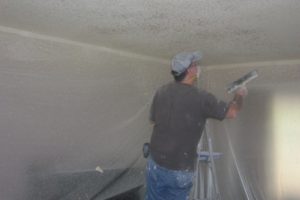Insurance Coverage And Water Damage
 Basements get flooded for many different reasons. Most water damage is derived from broken sub pumps and frozen pipes. Will this be covered by your insurance company? Yes is the answer, but it all depends on your claim getting reported to your insurance company.
Basements get flooded for many different reasons. Most water damage is derived from broken sub pumps and frozen pipes. Will this be covered by your insurance company? Yes is the answer, but it all depends on your claim getting reported to your insurance company.
The Island Cleanup and Restore network of restoration companies work with thousands of different customers each year to help them with overcoming the damage that is caused by cold winters and heavy rain. Every situation is different, however all of the customers share one thing in common. Their home owners’ insurance policies. When searching for a homeowners insurance policy people need to ensure they have 100% coverage.
What does 100% mean?
When it comes to mold damage and water damage, insurance companies are not always up-front about the coverage for your house. For example: When it rains very hard and the sub-pump in your basement is unable to keep up with how much water is pouring into the basement that it considered to be a flood and you won’t be covered unless you have flood insurance.
If your sub-pump breaks down and you have to buy a new one, unless you have flood insurance you won’t be covered. If water gets into the basement due to cracks that is considered to be seepage and flood insurance doesn’t cover it.
When water damage causes mold damage that isn’t covered by flood insurance even if your mold damage was caused by the original water damage. That is referred to as secondary damage. In this case, insurance companies won’t pay for the repair of secondary damage since the homeowner is considered to be responsible due to a lack of proper mitigation.
What mitigation refers to is work that first response companies perform. The work is done in order to prevent the occurrence of secondary damage. Mold only will grow when the relative humidity is over 60% for longer than 48 hours. In order to prevent mold growth (secondary damage), water is extracted from the carpet by the mitigation company, and air movers and dehumidifiers are set up. The most important phase is the extraction process since there are only two ways of removing water: 1 – dehumidacation and 2 – Extreme Extractor.
For removing water, the extraction process is the most effective and fastest method. Water is removed from the air by dehumidifiers and a thrust of water is created which transforms vapor into a solid. Evaporation is created by the air movers so that the water gets transferred from a solid form into vapor. That allows the dehumidifiers to transform the water once again from vapor into a solid and so that water can be drained out of the basement down the bath tub or drain.
Usually it take 3 or 4 days for all the water to be removed using dehumidifiers after the extraction process is complete. Once the basement is dry you should have an IICRC certified company deep clean all of the affected areas.
